#as a butch i wanted 2 make a flag that represents the whole community and isnt just representative of femininity!!
Explore tagged Tumblr posts
Text


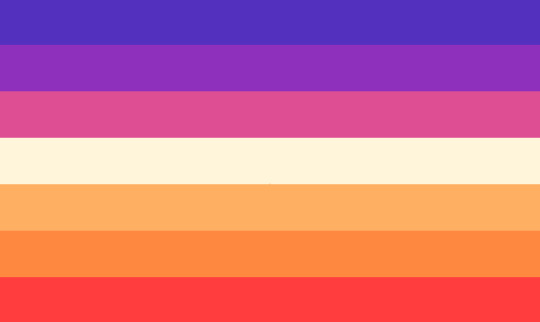


All Inclusive Transbian Flag! (+ stripe meanings & higher contrast version) I don't normally post flags, but I'm proud of this one PARTICULARLY so :3 here you all go! This is the all-inclusive transbian flag, for when you're trans in ANY way, shape or form and are a lesbian! Anyone can use this except if you fall under my DNI or you're not a transbian (unless you're making a character who IS one) ( this flag has also been dubbed the sunset flag & the hyacinth flag (courtesy of my friend Angel @fawningdolls ! )
#pride flag#coining post#<- ? maybe? unsure#lesbian#lesbian pride#transgender#trans pride#transbian#queer#idk... how else 2 tag this...#anyways there's another transbian flag i lov that's purple and pink (it's literally in my icon)#but i felt like it was too .. binary?#like it excluded those who fell outside of femininity and what most ppl think of when they hear “trans lesbian”#which is a trans girl or transfem who's a lesbian#and that is NOT to invalidate them. i love my trans sisters and i stand with them (and i am transfemmasc/a boygirl!)#but often times masc lesbians and transmascs and butches and gnc and nb people and intersex people are excluded from lesbian solidarity#anyone who isnt feminine and likes girls is questioned and invalidated and told theyre just straight or bi and confused#and it's insulting!#as a butch i wanted 2 make a flag that represents the whole community and isnt just representative of femininity!!#btw this isnt to say the purple + pink transbian flag is bad . you CAN use that flag (i use it!!!) and it wasnt made by a bad person#i just wanted to make one that upheld MY personal beliefs and thoughts on what it means 2 be a transbian#ultimately use whatever flag you feel is best for you!
159 notes
·
View notes
Text
I made a lesbian flag
I wanted to make my own lesbian flag for fun, and because I have complicated feelings on Emily Gwen. I don't intend to replace their flag but I felt like making one so here it is!
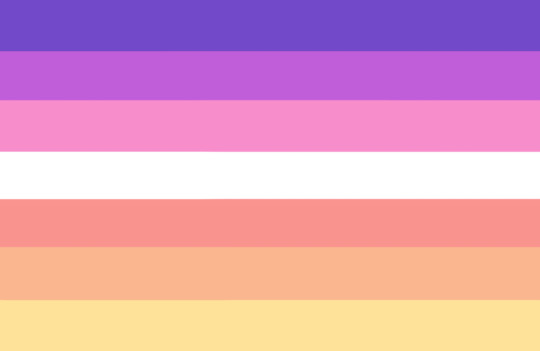

[Image ID: A 7 stripe flag. The stripe colors, in descending order, are: purple; violet-magenta; pink white; reddish salmon; pale orange; pale golden yellow. The second image is the same flag with the assigned stripe meanings, in descending order: gender nonconformity; queer love of women; femininity; unity; lesbian history and diversity; masculinity and those tied to it; nonbinary lesbians and NBLW/WLNB love. End ID.]
Since Emily's is already called the sunset lesbian flag, perhaps this could be the sunrise lesbian flag or dawn lesbian flag. Yeah I like that. Dawn lesbian flag.
Stripe meaning explanations:
1. Gender nonconformity: lesbian history is rich in gender nonconformity. This obviously includes butches and futches, as well as pronoun nonconforming lesbians, trans lesbians, and nonbinary or genderqueer lesbians, but it also includes all lesbians who simply see loving women as nonconformity to traditional roles, something it was seen as historically before it was more normalized
2. Queer love of women: no matter what lesbian definition you use, a lesbian's love of women is queer. Purple is a color often seen in QLW terms, and as such I chose it to represent our love of women
3. Femininity: whether you're a femme or a trans man lesbian who feels a connection to femininity and through his AGAB, the femininity stripe represents all lesbians who feel a whole or partial connection to femininity, or simply have a deep love for femininity and feminine people
4. Unity: despite the fact that the lesbian label has so many different ways to be experienced, we're all united by the fact that we're lesbians. We are a community, united together.
5. Lesbian history and diversity: the lesbian label has a lot of diversity in it. Some lesbians are women who exclusively love women, and some lesbians are bigender boygirls who have split attractions between loving all genders and loving feminine genders. This diversity is backed by the history of the lesbian community and label. But on top of that, this stripe also pays homage to the significance of lesbians in queer history, especially how lesbians played an important role during the AIDS crisis.
6. Masculinity and those tied to it: This stripe is for the butches, the he/him lesbians, the transmasc and trans man lesbians, the lesboys, and all the other lesbians who feel connected to masculinity.
7. Nonbinary Lesbians and NBLW/WLNB love: Nonbinary lesbians have always existed and continue to exist to this day. They are a beautiful part of the lesbian label, and both nonbinary lesbians and lesbians who love nonbinary people are highlighted with this stripe.
I tried to make a 5 stripe variation but it didn't look as nice. This flag is inclusive of anyone who considers themselves a lesbian. All lesbians belong under this flag, and all lesbians may use it, even if I don't personally align with all your beliefs.
Tagging @queer-love-4-women for visibility, if they choose to reblog it.
#lesbian#lesbian flag#new lesbian flag#flag design#alternate flag#alt flag#alternative flag#flag redesign#pride flag redesign#except I don't want to replace any others#just adding it to the pile of lesbian flags
134 notes
·
View notes
Photo

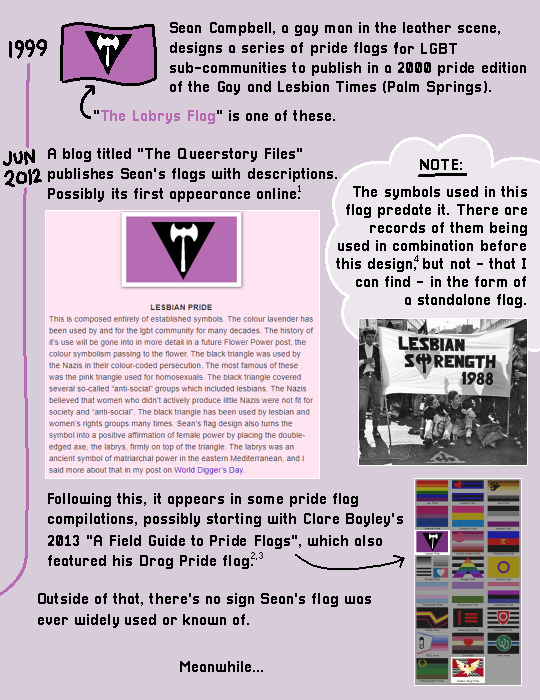

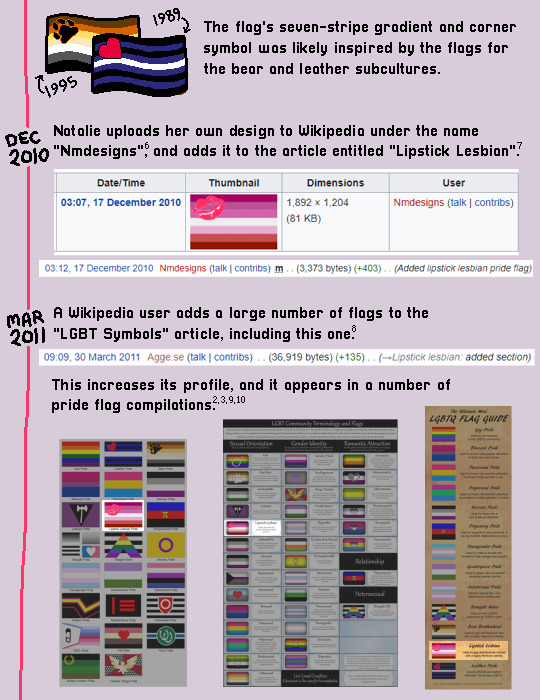
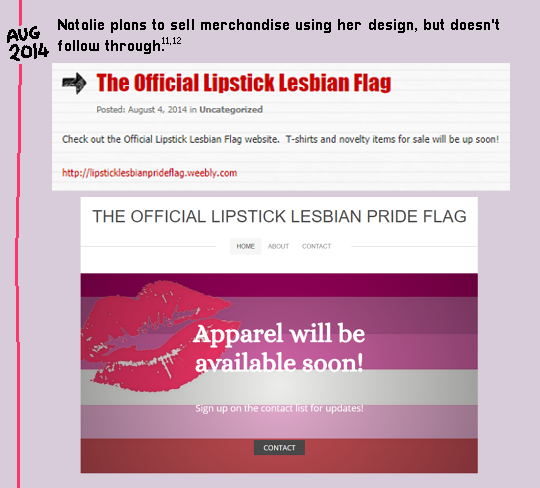
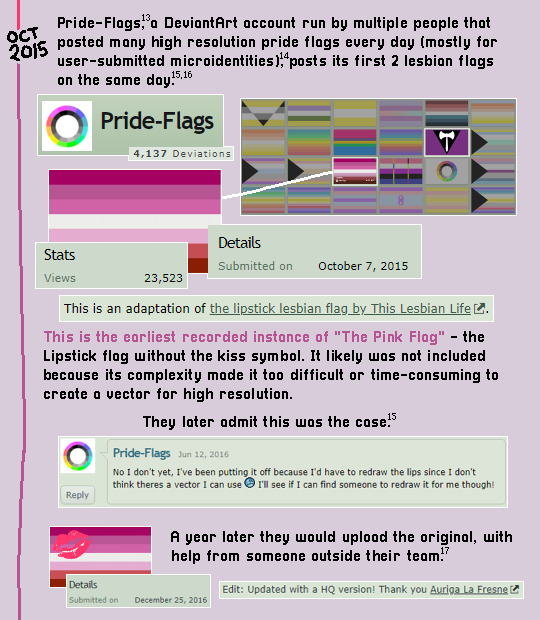


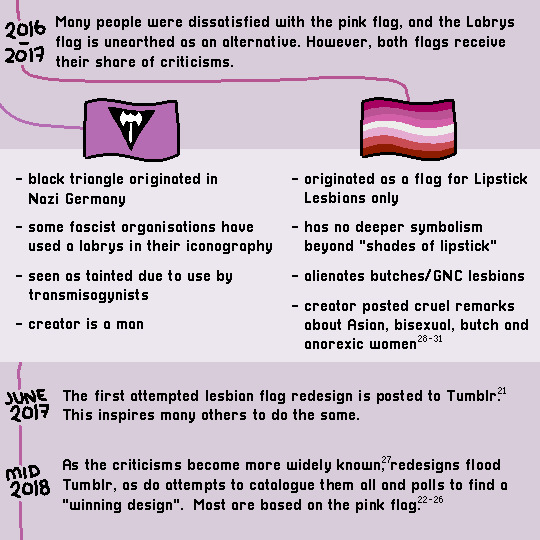

Seeing a lot of misinformation flying around regarding lesbian flags this year, particularly the pink one, so here’s my attempt to set the record straight!
FAQ/Common Misconceptions and Sources are listed below the cut - if anything in this post contradicts what you’ve heard, I’d encourage you to read through them before responding.
Please DO NOT promote flag redesigns on this post :)
-----------------------------------------------------------------
UPDATE 2 (2021):
First of all, a long-overdue note that @moral-autism kindly transcribed the bulk of this infographic here, for anyone looking for a text-only version!
Secondly, I have been contacted by @kiloueka, who created/uploaded the high resolution “Pink Flag” to the Pride-Flags DeviantArt account in 2015. They clarified that they did not independently leave out the lipstick mark to create a general lesbian flag, but had previously seen a kiss-less version in a tumblr post (likely one of the ones linked in the update below).
UPDATE: New Information
@deadicateddeath brought my attention to the existence of this pride flag compilation post on Tumblr, published 8 December 2013. This is now, to my knowledge, the earliest record of the pink stripes featured without the kiss mark. The same blog made another post (10 January 2014) which featured the pink flag and claimed that it was seeing use at the time.
I am extremely interested to know if there is any evidence of pre-2015 use of the pink flag outside of this blog, as I was unable to find any during my research.
Additionally, some people feel I have downplayed the extent of the labrys’s usage. As above, I included a note to acknowledge the prevalence of the symbols used in the labrys flag (separately and in combination), but this post is specifically focussed on flag designs, and I can’t find any indication of a labrys flag itself (whether Sean Campbell’s design, or a separate design) seeing much use pre-2015.
I would be extremely interested to see any evidence of this flag being used pre-2012, something which I did hunt for but could not find.
If you have any sources regarding either of these issues, please send them my way! I am 100% open to correction and clarification, provided it can be factually backed up.
-----------------------------------------------------------------
FAQ/Common Misconceptions & Source Requests
So... what flag should we use?
My primary motivation in making this was to clear up misinformation, not to tell anyone what flag to use. Use your own judgement, even make your own if you want, just don’t get stressed out if your flag isn’t “the” flag and remember that flag colours are not the only avenue through which to show pride!
The lipstick lesbian flag is an edited version of the pink flag, which is the original.
There is no evidence to support this. The lipstick lesbian flag had been documented online for years prior to the pink flag, as explained above.
The lipstick mark was removed to make the flag more inclusive.
There’s no proof of this - as explained above, the first instance of the mark being “removed” (i.e. not included) was due to it being too complex to easily convert into a high resolution image.
The pink flag is, and has always been, “the” lesbian flag.
The pink flag has only been in semi-common usage since 2016, and its use is still mostly confined to younger online communities.
The rainbow flag is the gay (man) flag.
The rainbow flag [32] was created by Gilbert Baker in 1978 to represent the LGBT community as a whole (I used his original 8-stripe design in the final panel). It does not belong exclusively to gay men, and it does represent lesbians. Please stop framing it like this:

when it’s actually like this:

This doesn’t mean we can’t have a specific flag for the lesbian community, but it’s not the case that we need to scramble the fill the gap left by a “missing” flag. Stop reading malice into my words... lmao.
The creator of the the lipstick lesbian flag/the labrys flag is a TERF.
I can’t find any information on Sean Campbell that would suggest this, and while a cursory browse through Natalie McCray’s social media did turn up some casual cissexism, nothing indicates she was a TERF. If you have sources that show otherwise, please send them my way!
What is a “Lipstick Lesbian”?
A feminine lesbian, and by many definitions, one who only dates other feminine lesbians. Natalie McCray’s edits to the Lipstick Lesbian Wikipedia page under the name “Nmdesigns” [7] show that she subscribed to the femme4femme definition.
Why don’t you want people to promote flag redesigns on this post?
This post was created to dispell misinformation and explore the online trails of lesbian flags prior to 2017. I don’t want to tell other people what flag to use, nor do I want others to use this post as a platform to tell other people what flag to use, because that’s not the purpose of this post.
I’m not a lesbian, can I reblog this?
I don’t mind who shares this, but if you want to add commentary as someone ouside the lesbian community, please think carefully on whether or not it is relevant or appropriate.
Can I repost this on Twitter/Facebook/etc?
I don’t mind, but I’d strongly recommend including a link back to this post in order to preserve the sources.
Actually, there is an official/agreed upon flag! It’s ______.

-----------------------------------------------------------------
Sources
Scupham-Bilton, Tony. "Putting Out Sean Campbell’s Flags”. The Queerstory Files, 21 June 2012. [archive]
Bayley, Clare. “A Field Guide to Pride Flags”. Clare Bayley, 27 June 2013. [2014 archive] [2015 update archive]
@lovemystarfire. “LGBT Community Terminology and Flags”. DeviantArt, 18 April 2014. [archive]
Volcano, Del Lagrace. And the March Stops. 1988. Photograph. Lesbian Herstory Archives. London [archive]
McCray, Natalie. “Lipstick Lesbian Pride!!!”. This Lesbian Life, 28 July 2010. [archive]
File:Lipstick Lesbian Pride Flag.jpg @ Wikimedia Commons [archive]
Lipstick lesbian: Revision history @ Wikipedia [archive]
LGBT symbols: Revision history @ Wikipedia [archive]
@darciam. “Pride United - Button Set”. DeviantArt, 27 August 2012. [archive]
@LeiAndLove. “Ultimate LGBTQ Flag Guide”. DeviantArt, 17 July 2011. [archive]
McCray, Natalie. “The Official Lipstick Lesbian Flag”. This Lesbian Life, 4 August 2014. [archive]
McCray, Natalie. The Official Lipstick Lesbian Pride Flag, retrieved 1 June 2016. [archive]
@Pride-Flags @ DeviantArt [archive]
@Pride-Flags. “Pride-Flags’s DeviantArt Gallery (page 138)”. DeviantArt, retrieved 5 June 2019. [archive]
@Pride-Flags. “Lesbian”. DeviantArt, 7 October 2015. [archive]
@Pride-Flags. “Lesbian Labrys”. DeviantArt, 7 October 2015. [archive]
@Pride-Flags. “Lipstick Lesbian”. DeviantArt, 25 December 2016. [archive]
@emtmercy. “the lesbian flag is so cute...”. Tumblr, 11 March 2016. [archive]
@sappharah. “the lesbian flag is so cute...”. Tumblr, 27 March 2016. [archive]
@sappharah. “the lesbian flag is so pretty...”. Tumblr, 8 June 2016. [archive]
@allukazaoldyeck. “sorry this should be my last...”. Tumblr, 30 June 3017. [archive]
@allukazaoldyeck. “Lesbian Flag Poll Data Results”. Tumblr, 7 June 2018. [archive]
@which-lesbian-flag. “The Lesbian Flag Survey”. Tumblr, 21 July 2018. [archive]
@taqwomen. “Lesbian Flag Colors”. Tumblr, 26 July 2018. [archive]
@official-lesbian-flag. “Official Lesbian Flag Poll”. Tumblr, 30 June 2018. [archive]
@creatoroflesflagisracist. “Commercial Lesbian Flag Poll (please only lesbians vote)”. Tumblr, 14 December 2018. [archive]
Lydia. “A Lesbian Flag for Everyone”. Medium, 27 June 2018. [archive]
McCray, Natalie. “My Worst Date Ever”. This Lesbian Life, 18 July 2010. [original archive] [2018 updated archive]
@thislesbianlife. “The second season of the real l word has too many butches”. Twitter, 16 May 2011. [archive]
@thislesbianlife. “Why don’t butches shave their armpits!!! IT’S DISGUSTING! Even men trim it!”. Twitter, 8 January 2011. [archive]
McCray, Natalie. “The 10 Worst Things About Being A Lipstick Lesbian”. This Lesbian Life, 18 July 2010. [archive]
Baker, Gilbert. Rainbow Flag. 1978. Nylon. Museum of Modern Art. New York. [link]
-----------------------------------------------------------------
Credit
Font: Pixellari by Zacchary Dempsey-Plante [x]
Pile of Flags:
(NOTE: This is by no means an exhaustive list of recent redesigns, nor am I interested in curating such a list. I am having difficulty tracking down the original posts for 17 and 31, if you recognise them please get in touch!)

[x]
[x]
[x]
[x]
[x]
[x]
[x]
[x]
[x]
[x]
[x]
[x]
[x]
[x]
[x]
[x]
--
[x]
[x]
[x]
[x]
[x] *
[x]
[x]
[x]
[x]
[x]
[x]
[x]
[x]
[x]
[x]
[x]
[x]
[x]
[x]
[x]
[x]
[x]
[x]
[x]
[x]
[x]
[x]
[x]
[x]
[x]
[x] *
[x]
[x]
[x]
[x]
[x]
[x]
[x]
[x]
[x]
[x]
[x]
[x]
[x]
[x]
[x]
[x]
* Indicates that the original post has been deleted, and a reblogged version of it has been archived instead.
67K notes
·
View notes
Text
So that’s kind of the whole point: you don’t need to ask permission to use a flag or a label or reclaim a slur.
Because nobody is qualified to judge that. Everybody has their own experiences and history and life, and you don’t get a shiny gold badge that says “identity police” after 2 days of discovering you’re bi at an orgy or 50 years of gender contemplation.
Your presentation, your sexuality and gender identity and your relation to those aspects of yourself, are 100% yours. If you feel like a word or some horizontal lines of color best represent you, or you feel a connection? That’s all it is!
Irl LGBT spaces are just communities of people who have, all by themselves, decided who they were and sought out others like them. And that can be as broad as “Im queer” and as specific as “I’m a nonbinary trans femme pansexual demiromantic” but the important part is it’s up to you, you alone can see inside your own mind and heart and experiences and judge from those how you want to identify, what information you want to share with people. You can spend days thinking about what you feel fits you best, or just pick the first term you see. You can even do both! So many people have a more technical label that they could use, but revert to the umbrella terms because that is what they are for!! For safety and community and ease of communication.
I don’t see any problem with labeling yourself more specifically, if you want to. I completely understand wanting to have a specific community, and fit in, and THIS is who I really am and here are 300 others just exactly like me. However I urge you, if you’re a young person struggling with labels and microcommunities and worrying about being in the correct box: come hang out under the umbrella. You will find that actually, there are 3000000000 just like you, who want to fight next to you, who have been here the whole time. Spend some time that you would be worrying about which label best fits and read some queer history, talk to older members of the community, learn what those labels really meant and mean and why someone might rather identify as a butch, or a queen, or a bear, or a d*ke, or a queer. And (to everyone reblogging but tagging this “q slur”) why these terms are important and why someone might want to take away someone else’s label.
Without queer, people start to build those boxes, and their identity becomes “NOT that thing” instead of “this thing.” And then when someone who is this thing and also that thing tries to make themself comfortable in the community, those people panic because suddenly the focal point of their identity doesn’t have a solid ground. This post explains that concept a lot better, and it’s from a lesbian pov which I cannot claim to speak for.
We should be a family, a community, and that means that our flags are tools that you should be able to use as you need. The original pride flag makes me feel like I’m wearing armor. The ocean flag makes me feel like I’m in a gorgeous ballgown and handlebar mustache. The word queer makes me feel like a fae. The trans flag makes me feel proud and protective. The bi flag makes me feel like I’ve got a cool sword. And the word fag makes me feel like I just yanked the baseball bat out of my attackers hands.
We don’t begrudge baby gays for changing their labels or names or not even having a label, so why would we do it to anyone else? You never stop growing, getting new experience and learning about yourself. You can even use multiple labels! Or none! Change it when you get a new partner or don’t. At the end of the day, everyone’s identity and labels are their business, and there is no way to know anyone else’s business unless they choose to tell you. If someone is trying to gatekeep you from an identity or flag or word, chances are they’re either extremely insecure or so bored they have nothing better to do than try to make someone else feel not-at-home. Either way, fuck em, think and research for yourself, label or don’t label yourself for your own comfort, not because “according to google you technically fit best in blah blah blah” we’re not hagworts houses!!! Use the prettier flag, reclaim the slur, go to the support group! Just remember you’re doing it through the lense of your own experiences, and that our umbrella is more than infighting, it is a symbol of pride and protection. We all fit under Gilbert Bakers flag, that doesn’t mean we can’t use others.
Why does everything have to be an argument. Using the MLM or “toothpaste” flag does not fucking mean you hate history or you don’t respect the community. It means that the original rainbow flag, does not symbolize being a gay man anymore.
It symbolizes and is an umbrella for the community as a whole, which is incredibly important for us to have!!
But if you’re bisexual and you want to flag that, you can wave the bi flag.
If you’re a lesbian you can wave the sunset flag.
But guess what?? If I as a gay trans man wear the rainbow flag, it doesn’t tell people that I’m a gay man, it tells people that I’m under the lgbt umbrella, which 90% of the time leads people to assume I’m a bi girl. I use the MLM flag to tie my gender to my sexuality, for my own comfort.
Is the MLM flag as well known as the others? Maybe not!
Does the rainbow flag still represent my family, my fight and my identity? Of course!
I agree that a disturbing amount of queer kids aren’t getting any history, and I’m sure there are some on twitter that are being little douchebags and trouncing on Gilbert Bakers name and that does make me want to cry
But denouncing flags and identities isn’t the way to make them come around. You can fly more than one flag. Your presentation and the information you show people is up to you. And trying to tell kids that they’re bad for wanting a flag that they feel represents them best really isn’t gonna make them listen.
4K notes
·
View notes